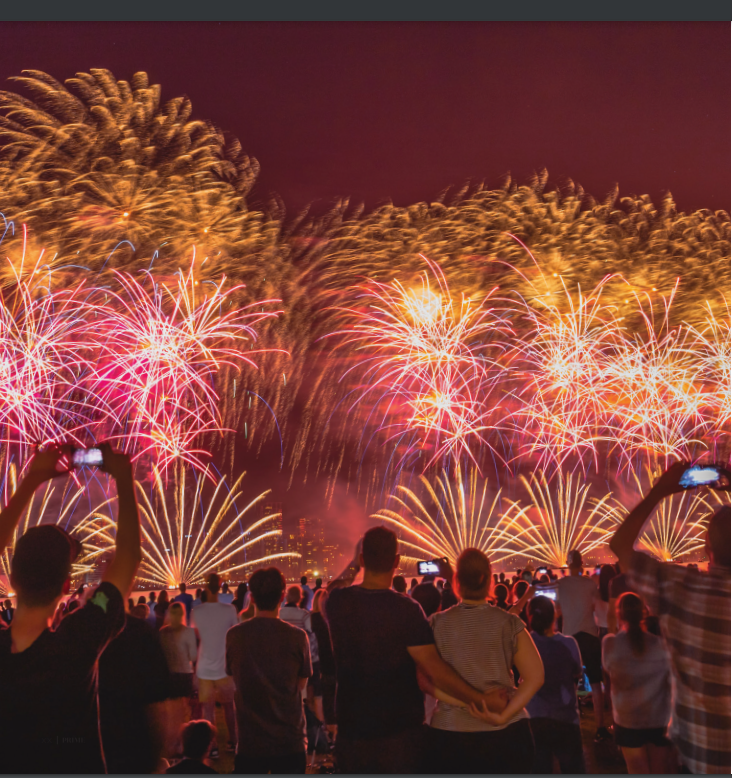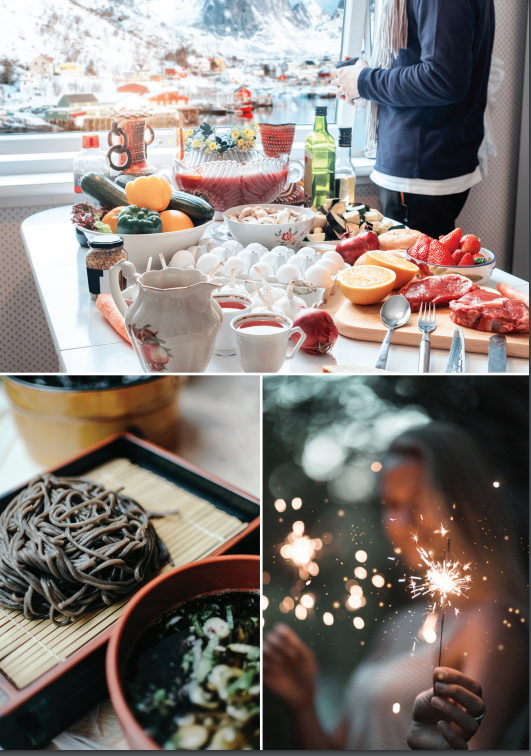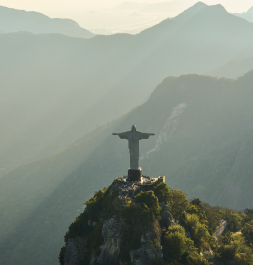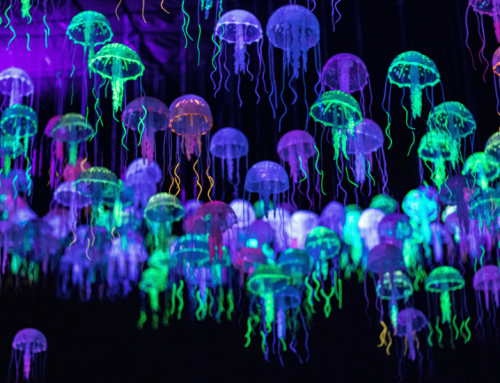
How the World Welcomes the New Year: Traditions, Customs and Lucky Foods
As another year draws to a close, many travellers dream of discovering New Year traditions around the world — hearing fireworks in distant skies and tasting festive dishes from different lands. Even if travel isn’t on the cards, we can still journey through the stories behind these celebrations. Let’s explore how people across the globe welcome the New Year with joy, colour and meaning.
How New Year Celebrations Began
New Year celebrations date back more than 4,000 years. Early civilizations used the sun and moon to mark the start of each year. The earliest recorded festival comes from ancient Babylon, where the first new moon after the spring equinox signalled renewal.
Over time, calendars became more accurate and often linked to agriculture or astronomy. The Chinese calendar is lunisolar, where months follow the moon but years align with the sun. The Islamic calendar is purely lunar, beginning with the month of Muharram. For countries using the Gregorian calendar, January 1 eventually became the universal day of celebration.
Asia’s New Year Customs
Across Asia, New Year traditions around the world show how renewal takes many forms — from fireworks to food.
Philippines: Round for Riches
In the Philippines, everything round symbolises prosperity. Families fill dining tables with round fruits, jingle coins in their pockets, and even wear polka dots to “keep the money rolling.” At midnight, they open doors and windows to invite good fortune in and let negativity out.
Japan: Bells and Mochi for Renewal
In Japan, New Year (Shōgatsu) is full of tradition. Families eat toshikoshi soba (“year-crossing noodles”) before midnight to ensure long life and cut off the past year’s misfortunes. On New Year’s Eve, loved ones gather for mochitsuki, pounding sticky rice into cakes. Temples ring their bells 108 times in the Joya no Kane ceremony — one for each human desire that must be released before the new year begins.
South Korea: Family, Rice Cake Soup and Respect
In South Korea, Seollal (Lunar New Year) lasts three days. Families wear hanbok attire and share tteokguk, a clear soup with sliced rice cakes symbolising purity and a new year in age. Children bow to elders, receiving blessings and small envelopes of money in return.
China: Firecrackers, Dumplings and Reunion Dinners
In China, Chunjie or the Spring Festival is the most important holiday of the year. Red lanterns, fireworks and dragon dances fill the streets. Families gather for a reunion feast with dumplings shaped like gold ingots to bring wealth. Fish is served but never fully eaten, representing abundance for the coming year.
Thailand: Water Fights and Merit-Making
Thailand’s Songkran festival each April marks both the Buddhist New Year and a countrywide celebration of joy. People splash one another with water to wash away bad luck. They visit temples to make merit and build sand pagodas as a sign of renewal.
India: Many Calendars, One Celebration
In India, New Year traditions differ across regions. Northern states celebrate Baisakhi, the start of a new agricultural year. In the south, Vishu and Ugadi welcome spring with flowers, oil lamps and festive dishes. Across India, people also celebrate January 1 with sweets, lights and blessings for prosperity.
Singapore: A Blend of East and West
Singapore celebrates many new beginnings. The Marina Bay Countdown fills the skyline with fireworks on December 31. Soon after, the city prepares for Lunar New Year, Hari Raya, Deepavali and Christmas — a showcase of how cultures can celebrate together in harmony.
Turkey and Eastern Europe: Luck, Masks and Feasts
In Europe, New Year traditions around the world focus on food, good luck charms, and music.
Turkey: Colours of Fortune
In Turkey, East meets West in fascinating ways. A popular custom involves gifting or wearing red underwear to attract luck — a tradition also seen in Mexico, Bolivia and Brazil. Colours carry meaning: red for love, yellow for wealth, white for peace, and green for harmony.
Romania and Beyond: Animals, Masks and Feasts
In Romania, farmers listen to their animals on New Year’s Eve — if they speak, prosperity is coming. Villages hold lively mask dances about death and rebirth. Dancers dressed as bears, horses or goats visit homes to chase away evil.
In Eastern Europe, food plays a major role. Estonians eat seven, nine or twelve meals on New Year’s Eve to gain the strength of that many men, leaving a little for ancestral spirits. Hungarians avoid poultry (luck may fly away) and fish (luck may swim away). In Poland and Scandinavia, people eat pickled herring at midnight to bring prosperity.
Central and Western Europe: Leaps, Cakes and Coins
Scandinavia and the North
In Denmark, people save plates all year and smash them against friends’ doors for good luck. They also jump off chairs at midnight to “leap” into the new year. Dessert is often kransekage, a tall marzipan ring cake decorated with flags and sparkling ornaments.
Greece and the Mediterranean
In Greece, families hang onions on their doors and smash pomegranates at midnight — symbols of rebirth and abundance. They serve roast lamb or pork and leave an extra seat for Agios Vassilis, their Santa Claus.
Germany, Austria and Switzerland
Across Central Europe, pigs represent progress because they “root forward.” Austrians eat roast suckling pig and sip warm red-wine punch on Sylvesterabend. Germans enjoy Silvesterkarpfen (New Year’s carp) and keep a fish scale in their wallets for luck. In Switzerland, people drop a little cream on the floor for abundance and parade in costumes on “Old Sylvester’s Day” (January 13).
Britain and Ireland
In Scotland, Hogmanay celebrates the “First Footing” tradition — the first visitor after midnight brings gifts and determines the household’s luck. In Ireland, single women place mistletoe under their pillows to dream of love and later burn it for good fortune.

Southern Europe: Grapes, Lentils and Renewal
Italy: Feasting for Fortune
In Italy, La Festa di San Silvestro means rich feasts and family. People eat cotechino con lenticchie — sausage and lentils representing coins — along with zampone (stuffed pig’s trotter) and chiacchiere, crispy honey-dusted pastries. In Naples, residents toss old items from balconies to clear out bad luck.
Spain: Twelve Grapes for Twelve Months
In Spain, the clock strikes twelve, and everyone pops a grape for each chime — a century-old custom created by Alicante grape growers. Each grape represents good luck for one month of the new year.
The Americas: Dishes of Prosperity and Colourful Rituals
The Americas add colour to New Year traditions around the world with symbolic dishes and community rituals.
North America: Soul Food and Symbolic Dishes
In the United States, especially the Deep South, people eat Hoppin’ John — black-eyed peas, rice, greens and cornbread. Each food symbolises coins, paper money or gold, a recipe for good fortune in the year ahead.
Latin America: Rituals of Fire, Water and Love
In Mexico, families bake Rosca de Reyes, a sweet bread hiding charms or coins, and prepare tamales and menudo for loved ones. In Venezuela, people wrap twelve lentils in a banknote for prosperity. In Argentina, beans promise job security. Across Latin America, people light candles for love, peace, health and creativity.
In Brazil, worshippers wear white and gather at beaches for the Iemanjá Festival, offering flowers to the sea goddess. Others jump seven waves, making a wish for each one. In Ecuador, locals burn año viejo effigies — scarecrow dolls of public figures — to destroy bad luck. In Uruguay, crowds splash cider and water at Montevideo’s Cider War. Peru’s Takanakuy festival ends the year with friendly fistfights to settle old grudges.

Fortune-Telling for the Year Ahead
Many New Year traditions around the world include fortune-telling rituals to predict the year ahead.
In Peru and Colombia, three potatoes — one peeled, one half-peeled and one unpeeled — are placed under the bed. The first one pulled predicts the year ahead: unpeeled for wealth, half-peeled for stability and peeled for hardship.
In Belarus, single women play games with roosters and hidden objects to foretell marriage. Germans melt small bits of metal into water during Bleigießen, interpreting the shapes for luck, wealth or happiness.
A World of Renewal
From fireworks to food, New Year traditions around the world remind us that every culture celebrates hope in its own way.
Whether it’s bells ringing in Japan, grapes eaten in Spain or scarecrows burning in Ecuador, people everywhere share the same hope — to leave behind the old and welcome the new.
So this year, why not create a tradition of your own? Eat noodles for long life, light candles for love or splash a little water for renewal. However you celebrate, make it joyful and meaningful.
Have a Merry Christmas and a Happy New Year! PRIME
Disclaimer: Traditions differ by region and family. The descriptions above may not reflect every local variation. Nothing compares to experiencing these celebrations firsthand in their home countries.











Leave A Comment